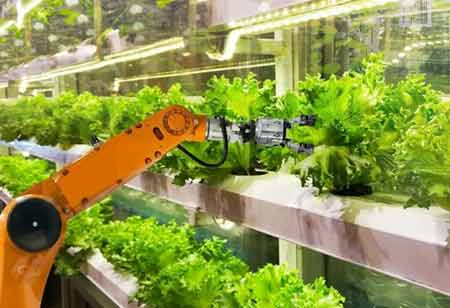Thank you for Subscribing to Agri Business Review Weekly Brief
How Has Satellite Imagery Agriculture and Farming?
Agriculture is frequently stereotyped as a slow-moving profession with old traditions. While the agriculture

By
Agri Business Review | Wednesday, March 17, 2021
Stay ahead of the industry with exclusive feature stories on the top companies, expert insights and the latest news delivered straight to your inbox. Subscribe today.
Increasing farming efficiency and refining processes allow farmers to run less resource-intensive farms. Satellite technology is increasing efficiency and lowering fertilizer consumption in farming.
Fremont, CA: Agriculture is frequently stereotyped as a slow-moving profession with old traditions. While the agriculture business is entrenched in profound and vital traditions and legacy, it has also embraced and is leveraging cutting-edge technical innovations in novel and powerful ways.
Satellite imagery for remote sensing in precision farming
Capturing photos and spectral light measurements from space can be valuable, but when paired with data from on-the-ground monitoring locations, they become extremely potent. The practice of matching satellite imagery data with on-the-ground samples to obtain condition assessments at various spatial scales is known as remote sensing. As a result, we can also make educated guesses approximately circumstances in places where no on-the-ground measurements have been taken. Moreover, remote sensing's strength and capabilities rapidly increase as technology advances.
Precision agriculture is one of the applications of remote sensing products in farm management. This is how a farmer combines remote sensing, on-farm data, and complex algorithms to translate this data into production projections, such as variable-rate fertilizer application rates or optimal watering quantities, to inform input decisions. The application of these strategies enables agricultural producers to be more strategic in their resource allocation, prioritizing profit and sustainability simultaneously.
The agricultural industry uses remote sensing and satellite photography data worldwide to make decisions, understand trends, and forecast future circumstances. Researchers and industry professionals use these spatial data to estimate changes in circumstances under various management plans, climate scenarios, and market forces, similar to how commodity price data is forecasted. Remote sensing technology is continually evolving, and new private industry actors and inventions emerge regularly.
Individual farmers use remote sensing technologies to keep track of circumstances and monitor growth, weather, and carbon with newfound ease and startling accuracy as their operations grow in scale. While these products aren't perfect, they're getting better, making day-to-day farm management easier and allowing managers to demonstrate their conservation and management efforts in a way that's both understandable and appealing. In the agriculture industry, satellite photography is transforming how things are done. Managers, researchers, and investors now have access to data that can help them make better decisions and move the industry forward where soil health is better, production is more efficient, and farmers are happier.





